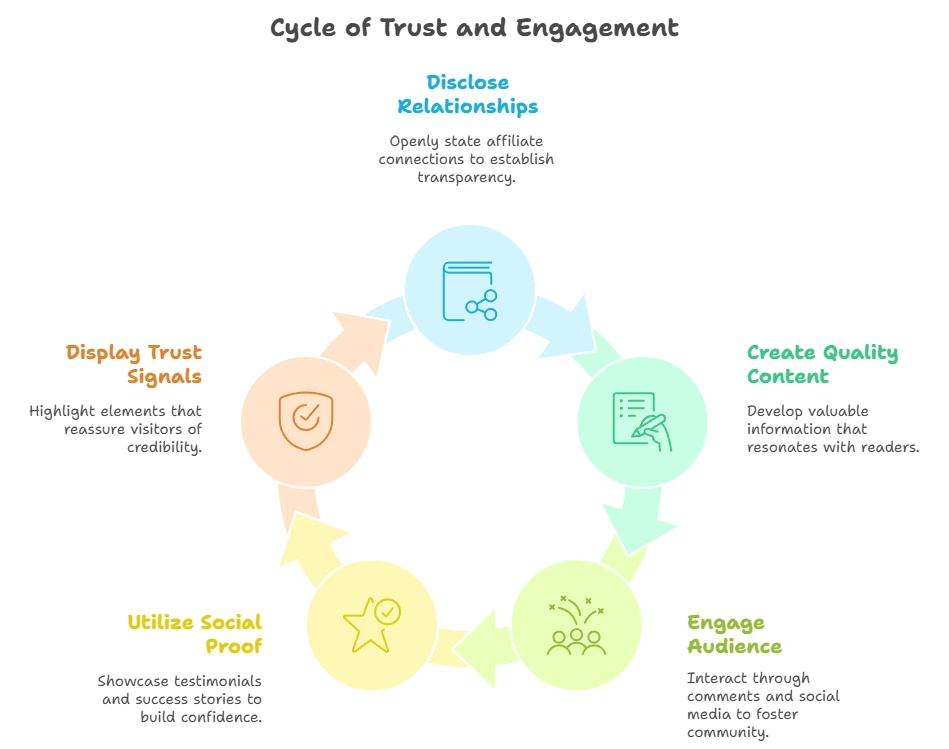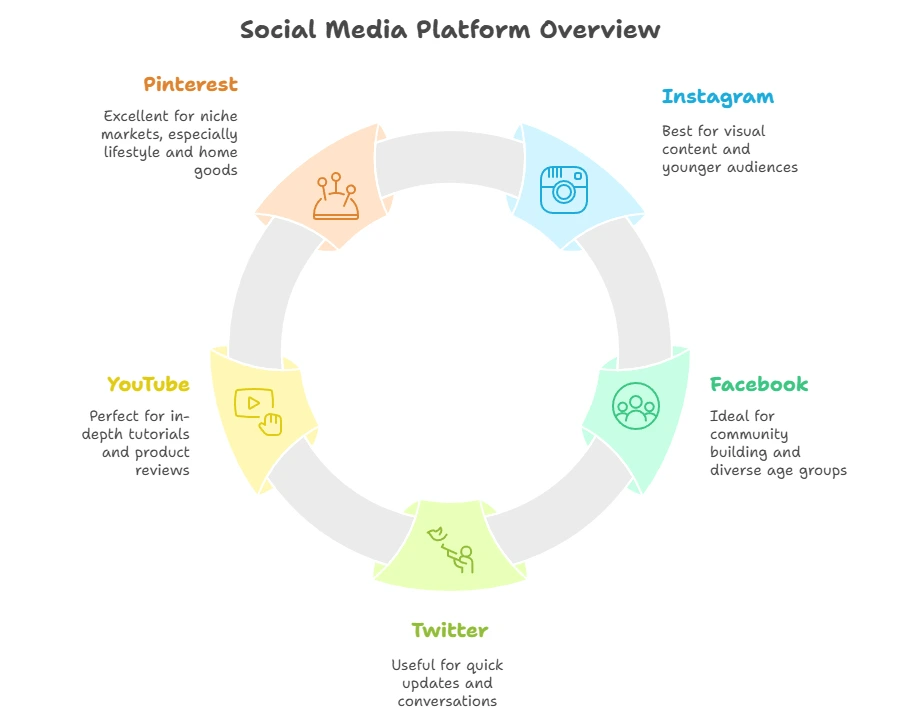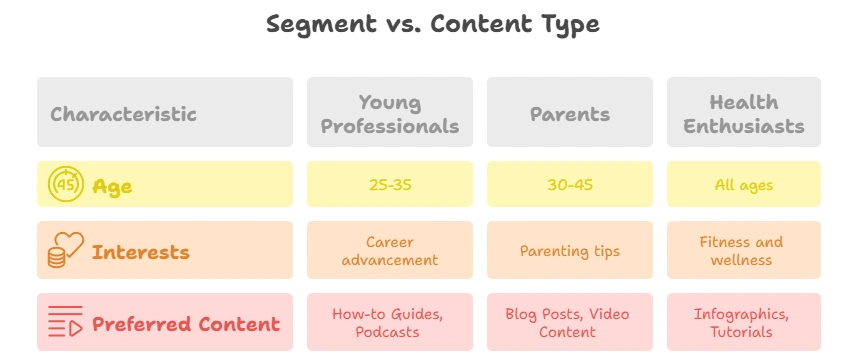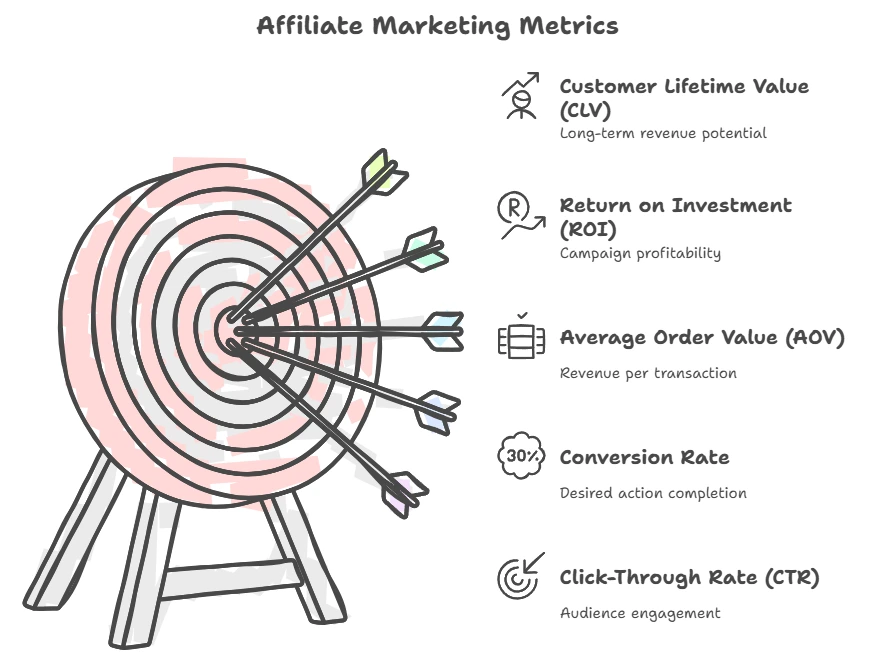
Affiliate marketing offers incredible opportunities, but achieving success in this competitive field requires strategic planning and effective execution. If you’re looking to elevate your affiliate marketing game, consider these vital tips to maximize your results.
Understand Your Audience
The first step to any successful marketing strategy is knowing who your audience is. Conduct thorough research to identify demographics, preferences, and pain points of your target market. Tailor your content to address their needs directly. Use tools like Google Analytics and social media insights to gain deeper understanding.
Pick the Right Niche
Choosing the right niche can be a game changer. Consider areas that you are passionate about, but also check their market demand. Some niches may seem appealing but lack a proper audience. Use resources like Niche Hacks to discover trending topics that align with your interests and ensure profitability.
Select Quality Affiliate Programs
Not all affiliate programs are created equal. Look for programs that offer competitive commissions and trusted products. Evaluate their payout structure, support, and reputation in the marketplace. Websites like Afillorama provide insights into various affiliate programs, making it easier to find a trustworthy partner.
Focus on Quality Content
Your content should engage and provide real value. Write honest reviews and create guides that help your audience make informed purchase decisions. Incorporate storytelling techniques to make your articles relatable. Remember, content that educates and entertains builds trust and boosts conversions.
Utilize SEO Techniques
To succeed in affiliate marketing, you must understand how to enhance your visibility on search engines. Here are some strategies:
- Use relevant keywords in your content, headings, and meta descriptions.
- Optimize your website speed and ensure it’s mobile-friendly.
- Use internal and external links strategically to improve user experience.
Tools like Moz can help you track your keyword performance effectively.
Engage on Social Media
Leverage social platforms to promote your affiliate content. Tailor your message for each platform while keeping it authentic. Consider creating dedicated pages for your affiliate endeavors on Facebook, Instagram, or Twitter. Engaging with your audience regularly can help you build a loyal following.
Email Marketing is Key
Email marketing remains one of the most effective strategies. Build an email list by offering valuable resources, like eBooks or exclusive discounts. Send regular newsletters with updates and tips. Personalize your emails to enhance engagement. Aim to provide genuine value rather than just promoting products.
Analyze Your Performance
Keep track of your performance metrics using tools like Google Analytics. Monitor factors such as click-through rates (CTR), conversion rates, and return on investment (ROI). Analyzing these metrics allows you to refine your strategy continuously.
Network with Other Affiliates
Learning from other successful affiliates can accelerate your growth. Join affiliate forums and communities where you can exchange ideas and challenges. Websites such as Reddit’s Affiliate Marketing Forum offer a platform for discussions and shared learnings.
Be Authentic
Authenticity is your greatest asset. Be open about your affiliate relationships and only promote products you genuinely believe in. This transparency builds trust with your audience and can lead to long-term success in your affiliate marketing journey. By implementing these effective strategies, you can set yourself up for affiliate marketing success. Remember, patience and consistency are key. Keep refining your approach, stay committed, and watch your efforts pay off!
Understanding Your Target Audience in Affiliate Marketing
Understanding your target audience is crucial for success in affiliate marketing. Knowing who they are and what they want allows you to tailor your content, making it more relatable and engaging. It’s not just about promoting products; it’s about creating a connection that drives conversions. Here’s how you can effectively identify and connect with your audience.
Identify Demographics
Start by collecting basic demographic information. Consider factors such as age, gender, location, and income level. This data helps paint a picture of who your audience is and what they may be interested in. Here are some options to collect this information:
- Surveys: Use tools like SurveyMonkey to create surveys asking your audience about their preferences.
- Social Media Analytics: Platforms like Facebook offer insights into users who engage with your content.
- Google Analytics: This tool will help you track the demographics of visitors to your website.
Understand Psychographics
While demographics give you a basic understanding, psychographics provide deeper insight. This includes your audience’s interests, values, and lifestyle. To gather psychographic data:
- Engage on Social Media: Read and respond to comments; they can reveal the thoughts and feelings of your audience.
- Review Comments and Emails: Analyzing feedback can help you understand wants and concerns.
Segment Your Audience
Once you have the data, consider segmenting your audience. This means breaking them down into smaller groups based on similar interests or behaviors. For instance:
| Segment | Characteristics | Preferred Content Type |
|---|---|---|
| Young Professionals | Age 25-35, tech-savvy, looking for career advancement | How-to Guides, Podcasts |
| Parents | Age 30-45, family-oriented, seek parenting tips | Blog Posts, Video Content |
| Health Enthusiasts | All ages, interested in fitness and wellness | Infographics, Tutorials |
Create Engaging Content
Now that you know your audience, create content that resonates with them. Always provide valuable information that caters to their needs. Try these strategies:
- Use Stories: Personal anecdotes or case studies can make your content relatable.
- Incorporate Visuals: Infographics and videos can enhance engagement and understanding.
Test and Optimize
Your audience may evolve, so it’s important to test and optimize continuously. Use A/B testing to determine what content performs best. Track metrics such as click-through rates and conversion rates to see what works. Here are some actions to consider:
- Adjust Messaging: If certain keywords resonate more than others, tweak your promotional efforts accordingly.
- Update Analytics: Regularly review analytics to stay ahead of audience trends.
Build Relationships
Foster relationships with your audience. Respond to comments, host Q&A sessions, or even create a platform for feedback. This connection builds trust which increases your chances of affiliate marketing success. Remember, people buy from those they trust.
For more insights on targeting your audience effectively, you might want to check out Affilorama for strategies specifically tailored for affiliate marketers.
By investing time in understanding your target audience, you set the stage for meaningful connections and, ultimately, greater success in affiliate marketing. Keep your audience at the forefront of your strategy to ensure your content remains relevant and effective.
Building Trust: The Key to Conversion in Affiliate Promotions
In the world of affiliate marketing, trust acts as the bedrock of successful conversions. When consumers feel secure in their purchase decisions, they are more likely to click on links, follow recommendations, and ultimately make a purchase. Building trust is essential, especially in a market teeming with competitors and deceptive practices. Here’s how you can establish trust and enhance your affiliate promotions, leading to higher conversion rates.
One of the first steps in building trust is transparency. Always disclose your affiliate relationships to your audience. When readers understand that you may earn a commission from their purchases, they appreciate your honesty. This practice can prevent feelings of betrayal if they later find out about your affiliations. Additionally, providing a clear explanation of what they can expect helps to create a more trustworthy relationship.
Consistently provide high-quality content that resonates with your audience’s needs and interests. Whether through blog posts, videos, or social media, focus on creating valuable information that solves problems or answers questions. High-quality content positions you as an expert in your niche, allowing your audience to trust your recommendations. Here are some content ideas that can enhance your credibility:
- Product reviews that include pros and cons
- Tutorials on using the products effectively
- Comparative analyses between similar products
- Personal anecdotes related to your experiences with the products
Building a connection with your audience plays a significant role in gaining their trust. Engage with them through comments, emails, or social media channels. Responding to their inquiries and showing that you value their opinions creates a sense of companionship. Here are some practical steps that can further enhance this relationship:
- Host Q&A sessions: Allow your audience to ask questions about products or affiliate programs directly.
- Share user-generated content: Feature testimonials or experiences from those who have used the products you promote.
- Conduct surveys: Gauge your audience’s needs and preferences to tailor your content accordingly.
Leveraging social proof is another effective strategy. When potential buyers see others endorsing a product, they are more likely to trust the recommendation. You can display testimonials, success stories, or statistics from previous customers. Consider adding a testimonial section to your site where visitors can read about others’ positive experiences. This shared experience builds confidence and encourages conversions.
Additionally, showcasing trust signals can significantly impact your conversions. Trust signals are elements that reassure your audience that you are credible. Examples of trust signals include:
- Secure website (using HTTPS)
- Professional website design
- Display of industry certifications or memberships
- Prominent links to your privacy policy and terms of service
- Active social media presence with genuine interactions
Effective website navigation also plays an essential role in trust-building. A user-friendly site where visitors can easily find information contributes to a positive user experience. Cluttered or confusing sites create frustration, driving potential customers away. Ensure your affiliate links are strategically placed and are easy to access without overwhelming the reader.
Continuously educate yourself on market trends, audience preferences, and effective strategies. Staying informed allows you to adjust your content accordingly. You’ll demonstrate a commitment to providing updated information, which can strengthen your credibility. Websites like Digital Marketing Institute and Neil Patel are excellent resources for keeping up with the latest in digital marketing and affiliate promotions.
| Strategy | Description |
|---|---|
| Transparency | Disclose affiliate relationships openly to build credibility. |
| Quality Content | Create valuable information that resonates with readers’ interests. |
| Engagement | Interact with your audience through comments and social media. |
| Social Proof | Utilize testimonials and success stories to build confidence. |
| Trust Signals | Showcase elements that reassure visitors of your credibility. |

By employing these strategies, you will not only gain the trust of your audience but also enhance your chances of conversion in affiliate promotions. Remember, trust is earned over time, so be patient and consistently apply these principles. The relationships you build today will yield great dividends in the future.
Utilizing Social Media to Boost Your Affiliate Marketing Efforts

Social media has transformed how businesses operate, and it’s an essential tool for affiliate marketing. If you’re eager to boost your affiliate marketing efforts, leveraging social media can give you a significant edge. Here’s how you can maximize your social media presence to elevate your affiliate marketing game.
First off, choose the right platforms. Different social media channels cater to different audiences. Consider where your target demographic spends most of their time. Popular platforms include:
- Instagram: Great for visual content and younger audiences.
- Facebook: Ideal for community building and engaging with a varied age group.
- Twitter: Useful for quick updates and engaging in conversations.
- YouTube: Perfect for in-depth tutorials and product reviews.
- Pinterest: Excellent for niche markets, especially for lifestyle and home goods.
Utilizing multiple channels will allow you to reach a broader audience. Create tailored content for each platform by understanding their unique features and user preferences.
Next, consistent branding is key. Your social media profiles should reflect your brand’s identity. This includes your profile picture, bio, and the tone of your posts. A cohesive look makes your brand memorable. Make sure to use the same logos and color schemes across all platforms.
Engaging content is crucial to capturing your audience’s attention. Focus on the following types of content to engage your followers effectively:
- Valuable Information: Share tips that solve your followers’ problems.
- Product Reviews: Give honest opinions on products you promote, creating trust with your audience.
- Interactive Content: Polls, quizzes, and questions encourage engagement.
- Visual Posts: Use images, videos, and slideshows to make your content more attractive.
Another effective strategy is collaborating with influencers. Influencers already possess a dedicated following that trusts their recommendations. Partnering with them can expose your affiliate products to a larger audience. When choosing an influencer, ensure they align with your brand values and niche for authenticity.
Utilize hashtags strategically to expand your reach. When used correctly, hashtags can make your posts discoverable to a larger audience. Research trending or relevant hashtags in your niche to include in your posts. Don’t overdo it, though. A few well-chosen hashtags can be more effective than a long list.
Engagement doesn’t stop with posting content. You must also interact with your audience. Respond to comments, messages, and mentions promptly. Acknowledge feedback and foster discussions. This shows that you value your followers’ opinions, which fosters a more robust community around your brand.
Consider running promotions or contests on your social media channels. These tactics can excite your audience and generate buzz around your affiliate products. Offer your followers a chance to win an item through sharing your post or tagging friends. This can increase visibility while simultaneously building your follower base.
Analytics is your best friend. Monitor your social media metrics to understand what content performs best. Each platform offers analytic tools to track engagement, clicks, and conversions. Utilize this data to refine your strategy and focus on tactics that yield the best results.
In addition, consider integrating your social media efforts with email marketing. Promote your social media content through newsletters and encourage followers to sign up for email updates. This cross-promotion keeps your audience engaged across multiple channels.
Create a dedicated landing page for your affiliate links. Social media can drive traffic, but directing that traffic to a well-designed landing page can significantly increase conversions. Ensure that the landing page is visually appealing, provides clear information, and includes a strong call-to-action (CTA).
For more tips on utilizing social media for affiliate marketing, you can visit Blogging Wizard or check out Digital Marketing Institute. These resources provide invaluable insights tailored to improve your affiliate marketing strategies.
Analyzing Affiliate Marketing Metrics to Optimize Performance
Understanding affiliate marketing metrics is key to maximizing your performance. By analyzing these metrics, you can identify what works, what doesn’t, and how to improve your strategies. Below, we will break down the essential metrics you should be tracking and how you can use them to optimize your affiliate marketing efforts.
Key Affiliate Marketing Metrics to Monitor
When diving into affiliate marketing, several critical metrics provide insights into your performance:
- Click-Through Rate (CTR): This metric indicates the percentage of users who click on your affiliate links. A higher CTR means your content effectively engages your audience.
- Conversion Rate: This measures the percentage of visitors who take a desired action, such as making a purchase. Enhancing your conversion rate can lead to increased revenues.
- Average Order Value (AOV): AOV shows how much customers are spending per transaction. Understanding AOV helps in finding ways to increase earnings per transaction.
- Return on Investment (ROI): ROI calculates the profitability of your campaigns. Keeping tabs on ROI ensures that your marketing efforts yield profitable returns.
- Customer Lifetime Value (CLV): This estimates the total revenue you can expect from a customer throughout their relationship with you. A high CLV suggests you should invest more in acquiring customers.
Tools for Analyzing Metrics
Many tools can help you analyze these metrics effectively. Some of the most popular options include:
- Google Analytics: A powerful tool for tracking website and user behavior, helping you understand where your traffic is coming from.
- AffJet: Specializes in affiliate metrics, allowing you to monitor your campaigns in one dashboard and comparing performance across various networks.
- Voluum: An advanced tracking solution that provides deep insights into clicks, conversions, and overall campaign performance.
Strategies for Optimizing Performance with Metrics
Once you’ve identified which metrics to track, the next step is applying your findings to optimize your performance:
| Metric | Optimization Strategy |
|---|---|
| Click-Through Rate (CTR) | Improve your call-to-action (CTA) and use compelling visuals to attract more clicks. |
| Conversion Rate | A/B test different landing pages to identify which achieves the best conversions. |
| Average Order Value (AOV) | Consider implementing upsell and cross-sell techniques to encourage larger purchases. |
| Return on Investment (ROI) | Regularly review your ad spend versus revenue generated to ensure you are investing wisely. |
| Customer Lifetime Value (CLV) | Focus on customer retention strategies such as loyalty programs to enhance revenue over time. |
Utilizing Your Data Effectively
Data analysis plays a pivotal role in shaping your marketing strategy. Here are some practices to keep in mind:
- Set Clear Goals: Determine what you’re looking to achieve with your metrics. Whether it’s improving CTR or enhancing ROI, having clear goals makes targeting easier.
- Regular Review: Make it a habit to review your metrics weekly or monthly. Consistent tracking helps identify trends and inform timely adjustments.
- Experiment and Iterate: Don’t be afraid to make changes based on your findings. Always be testing new ideas, whether in content, marketing channels, or audience targeting.
- Stay Updated: The digital marketing landscape is ever-evolving. Engage with resources such as HubSpot or Neil Patel to stay current on effective strategies and trends in affiliate marketing.
By focusing on these metrics and strategies, you can optimize your affiliate marketing performance. Ultimately, success in affiliate marketing relies on understanding your audience and continually enhancing how you reach and engage them. Leverage the data available to stay ahead and maximize your earnings.
Conclusion
Achieving affiliate marketing success hinges on a balanced blend of effective strategies, audience understanding, trust-building, social media engagement, and analytics. By implementing the strategies discussed, you will set a solid foundation for your affiliate marketing endeavors. Knowing your target audience isn’t just an option; it’s an essential part of crafting messages that resonate and lead to sales. When you build trust with your audience, you create long-lasting relationships that foster loyalty and increase conversion rates.
Harnessing the power of social media can amplify your reach and connect you with potential customers who may not have discovered your offers otherwise. Utilizing platforms like Instagram, Facebook, and TikTok effectively allows you to capture attention and encourage sharing, which can expand your affiliate marketing efforts exponentially.
Moreover, continuously analyzing metrics is crucial for understanding what’s working and what’s not. Tools like Google Analytics or affiliate dashboards provide valuable insights that help you tweak your approach to maximize profits. Remember that the affiliate marketing landscape is always evolving, so staying adaptable and responsive to changes will enhance your long-term success.
By focusing on these critical areas, you can create a robust affiliate marketing strategy that does not just seek quick wins but builds a sustainable income stream over time. Embrace these tips, evolve your methods, and watch as your affiliate marketing journey transforms into a fruitful venture.

